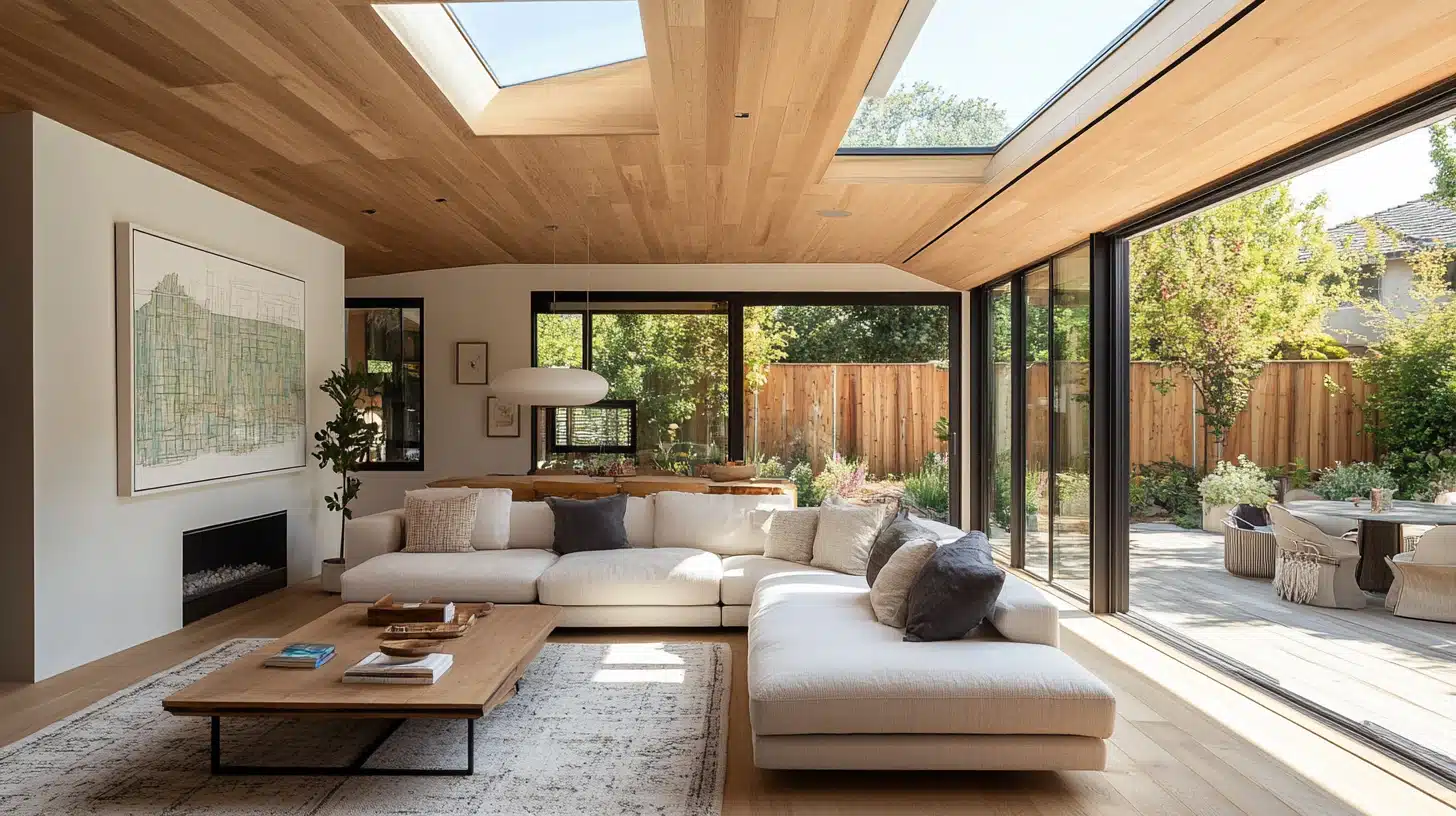Natural light plays an essential role in interior design, beauty, and well-being. A thoughtfully designed roof can do much toward bringing in the most daylight into a house reducing the need to rely on artificial light and making the spaces inside lighter and cozier.
With the use of skylights, roof windows, or advanced materials, subtle roof design extracts the best from natural light, which plays a role in openness as well as liveliness within interiors. This article discusses how roof design shapes interior spaces and why contemporary architecture must make the most of natural light.
Reflective Roofing Materials to Maximize Light
The roofing material may significantly impact the quantity of natural light within a dwelling. Reflective or light-colored roof surfaces prove useful in reflecting sunlight into buildings to illuminate spaces while keeping heat absorption at a minimum. Examples include metal roofing, reflective shingles, and translucent panels, which are ideal for homes that need the most daylight.
Moreover, the use of advanced roofing technologies gives a dash of modernity to house designs and maximizes energy efficiency. Homeowners seeking expert guidance on these materials can consult san antonio roofing professionals for customized installation solutions.
Skylights for Maximum Illumination
Perhaps the best means of bringing natural light to a home is through the installation of skylights. Piped directly into the roof, skylights open up windows of sunlight coming in from the top to light even the blackest of places.
Found in all manner of models, from non-moving models to ventilating models, new skylights light up while venting as well. They are particularly helpful in spaces with little or no natural light, such as bathrooms, hallways, and lofts. Additionally, energy-efficient skylights balance the temperatures inside while minimizing air conditioning and lighting needs.
Roof Windows for an Equilibrium Aesthetic
Like skylights, roof windows provide natural light but with the additional advantage of being operable. Roof windows can be adjustable to let in fresh air, and they are bright, airy homes. They are commonly used in attic conversions, loft spaces and high-ceilinged areas where standard windows are impractical.
Further, roof windows have direct contact with the external environment, leaving interiors more exposed and welcoming. Even distribution of light is possible through proper location, reducing the occurrence of shadows and improving general ambiance.
Strategic Roof Overhangs for Optimal Light Control
A well-designed roof considers the daily and seasonal angle of the sun. Roof overhangs, for instance, are incredibly important when it comes to the amount of natural light that is allowed into a house.
In summer they reflect intense sunlight to prevent overheating, while in winter they allow low-angle sunlight to warm them. Strategic roof design, e.g., butterfly or clerestory roofs, optimizes daylight entry without sacrificing temperature control. This synergy contributes to comfort with less energy use.
Sustainable Roofing and Intelligent Daylight Solutions
Green roofs and solar tubes are some sustainable roofing solutions that increase natural light while maintaining energy efficiency. Solar tubes or sun tunnels distribute daylight from the roof to interior rooms through reflective tubing—perfect for windowless rooms. Green roofs, meanwhile, offer insulation while scattering natural light all over the house.
Adding these components not only enhances indoor light but also promotes green living. If you’re considering green roofing, san antonio roofing professionals can provide expert installation and recommend the most effective solutions for your home.








